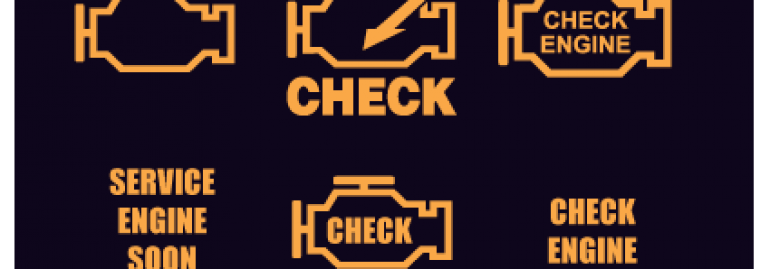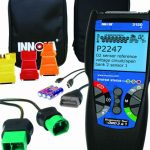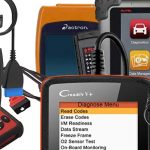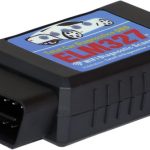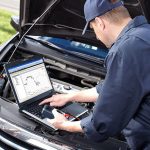
If you are looking for an affordable p code reader for your business or home, you have come to the right place. In this article, you will learn the benefits of this type of reader. There are a few different models on the market, and we’ve outlined what to look for in one before you make your purchase. Here, we’ll explore what you can expect from these models and give you a brief overview of some of their most useful features.
OBDII code reader
An OBDII code reader is a simple device that reads codes from vehicles. This device is compatible with all types of vehicles, and helps you diagnose and repair your car’s problem faster and easier. The reader also provides important information about your car’s performance, such as any trouble codes it has. Some models even include a built-in memory card for data backup and software updates. If you’re unsure about which model to choose, consider the following three options.
Firstly, it’s important to understand the functionality of an OBDII code reader. Most of these devices can read trouble codes in vehicles from 1996 and newer. This means that they can be used to diagnose engine problems that would have been difficult to diagnose with a basic tool. The software on OBD code readers helps you find the problem and fix it yourself. Some models even let you clear the code so that you can save time and money on repair bills.
While a basic OBDII code reader will be useful in a pinch, you’ll need more advanced capabilities for a more thorough job. You can buy an over-the-counter OBDII code reader, which costs under $10. These models are more sophisticated and can read codes from TPMS and park distance sensors. Whether you want an OBDII code reader for yourself or for your mechanic, the following two devices can help you get started quickly and efficiently.
A Bluetooth-enabled OBDII code reader works in conjunction with your smartphone to read the data from your car’s engine. Many models of this device also have built-in speakers and visual message cues. The AutoLink AL529 OBDII code reader supports all 10 modes of OBDII testing. It also supports all languages and four data waveform comparison. If you need international shipping, you can choose the International shipping option.
CC-ID codes
When you have a BMW, you may notice several warnings and failure messages while driving. You may also see the check engine light or notice a sign on one of the faulty components. Each of these messages is related to a malfunctioning component. Most of these alerts are self-explanatory, but sometimes you may not know exactly which part of the vehicle is malfunctioning. If this is the case, you may want to use a CC-ID code reader to check the codes.
The CC-ID codes can be classified into three categories: body, chassis, and network. The body category covers functions inside the passenger compartment. The chassis and network code categories cover components outside the passenger compartment, such as engine and drivetrain accessories. Finally, the U-codes relate to shared computer systems, network and vehicle integration. To diagnose a specific code, you need to know its first digit.
CC-ID codes may start with a number, such as 0. In other words, they are generic or global codes. Global codes are universal and are adopted by most car manufacturers. These codes may be assigned to a specific fault message, such as a power problem or an engine malfunction. Manufacturer-specific codes, on the other hand, are unique to a specific model. If your car displays a code with the first digit, it is probably a manufacturer-specific code and is a rare occurrence.
Diagnostic trouble codes
Identifying DTCs is easy with the right diagnostic tool. DTCs are a group of letters and numbers that have specific definitions. Depending on the type of trouble you are trying to diagnose, you can find an explanation in the vehicle manual or with a diagnostic trouble code reader. The first character of a DTC is a digit, ranging from one to eight. The second and third characters of a DTC are the manufacturer’s controlled, generic, or reserved codes. The fourth and fifth characters are usually a two-digit number that represents a particular fault index. You can also find a detailed explanation for a DTC by consulting the vehicle’s manual or manufacturer’s website. A good code reader will make the process of identifying DTCs simpler.
Using a code reader can help you identify the root cause of your car’s problem and repair it as soon as possible. If you have been driving for a while, you might notice an increase in the amount of gas you have pumped into your car. This could be a symptom of a faulty EVAP system. A faulty computer system or an EVAP sensor could be the cause of your car’s EVAP codes.
OBD stands for on-board diagnostic system. The diagnostic trouble code is a series of letters and numbers that the on-board computer manages to identify the problems with the vehicle. A DTC may be generated by the manufacturer, SAE, or a combination of both. Once a problem has been identified, the code will be stored on the car’s on-board computer management system. The P0442 code is an indication that the evaporative emission system is leaking.
Diagnostic trouble codes are usually classified by their manufacturer. They fall into three main categories, namely body (B-codes) and chassis (C-codes). The first digit of a P-code relates to the system in question. Generally speaking, a P-code will illuminate the Check Engine Light when a problem occurs in the engine or transmission, while body and chassis (C-codes) are related to other systems and components of the car, such as the brake system.
Generic codes
When using a p code reader, it is important to remember that the first digit of a diagnostic code is always generic, which means that the car manufacturer has nothing to do with it. Generic codes are therefore referred to as “global” codes, and are used by most car manufacturers. They are also grouped into two categories: current codes and history codes. While current codes require immediate attention, history codes are less important.
P and C codes are the most common codes, and are separated into different categories. For example, P codes cover the powertrain, while C and U codes are more general and are specific to the chassis and network of the vehicle. A P code reader will be able to identify which of these two codes applies to your vehicle, and you can use it to determine the cause of the problem yourself. This method is best for experienced mechanics, but at-home DIYers can also use a P code reader to determine what type of car you own.
While OBD II code readers can read generic codes, the best way to tell which one is generic is to look for a manufacturer-specific code. These codes will be displayed as either a “Manufacturer Only Code” or “Unreadable Code” message on the display. If the generic code is a “1,” it indicates that the code is a manufacturer-specific code. A “1” code means the engine, transmission, or emissions.
Some generic codes will overlap with a different area. Some of them will be “P” codes for OBD II and “C” codes for direct manufacturers. However, if you own a car and have an OBDII compatible code reader, it’s a good idea to purchase both for a faster diagnostic experience. You can then go to the manufacturer’s website to find a diagnostic code for your vehicle.


